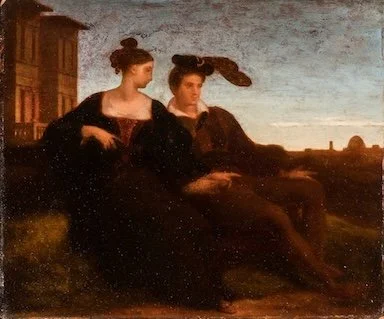To leave your religion is to destroy your entire upbringing—this is familiar advice from my fifth-generation Jewish American parents. Although the “Jewish bloodline” runs matrilineally[1] and my parents care less than previous generations about the religion of whom I marry, I know that if I were to convert, it could shatter my family. Perhaps this is why I sympathize with Jessica, from William Shakespeare’s The Merchant of Venice, and understand the gravity of her decision to marry a Christian and convert. In this essay, I will explain Jewish identity, modern feelings towards conversion out of Judaism, and linguistic assimilation models in order to fully dive into the loss of self in Jessica’s conversion.
Read MoreHygiene and cleanliness are undisputed expectations for members of civilized societies across the globe. Such hygiene may be achieved in a myriad of ways, depending on the location and resources available. The use of soaps and water is often the norm when it comes to the cleaning of clothing and fabrics. The introduction of washing machines has made cleanliness convenient, removing the need for households to spend hours scrubbing and drying fabrics. Certain fabrics demand special care, such as precious satins or embroidery, which present cleaning difficulties on a physical level and must be washed manually. There is difficulty in cleaning certain fabrics beyond the physical limitation due to sentiment or symbolic importance. In Southeast Asia, Buddhist monks living in monasteries are held to the same societal expectation of hygiene as any other civilian, but are also presented with religious demands on their outward presentation.
Read MoreBehind every conscious decision, there is a motive. It is what drives us all to achieve a better life and world around us. Reginald Scot, an early modern English demonologist, was no different. During the later decades of sixteenth-century England, the height of the witch persecution was impending due to societal ignorance, religious tensions, and poverty. While this era did not see as many witch persecutions as the fifteenth and seventeenth centuries, Scot nevertheless set forth a radical treatise titled, The Discoverie of Witchcraft, that argued against women who confessed to causing maleficia, or demonic harm, because they could not have manifested it.
Read MoreThe adaptation of fairy tales is a tradition that has lasted for centuries. Early fairy tale authors, such as d’Aulnoy and Perrault, enjoyed considerable freedom when adapting fairy tales. However, the rise of Disney restricted access to further fairy tale adaptations through the company’s persistent enforcement of copyright laws. Nevertheless, with the arrival of the internet, users found unprecedented avenues to engage in the reimagining and adaptation of fairy tales without fearing copyright laws, echoing an era predating Disney.
Read MoreIndividuals are heavily influenced by significant figures around them- for better, or for worse. Janie Crawford, the protagonist within Hurston’s literary work Their Eyes Were Watching God, is shaped through social pressures related to her race and gender on her own journey to self-discovery and acceptance.
Read MoreArt Nouveau was an art reform movement of the late nineteenth century in France that sought to revive nature in response to the industrial standardization of art and design. This project introduces that Art Nouveau involves metamorphosis and interrelationship as key principles that unify the construction with ‘design fitness,’ incorporating utility and beauty, and examines Art Nouveau as an avant-garde turning point that led to the emergence of Modernism, breaking free from traditional representations of nature and architecture.
Read More





